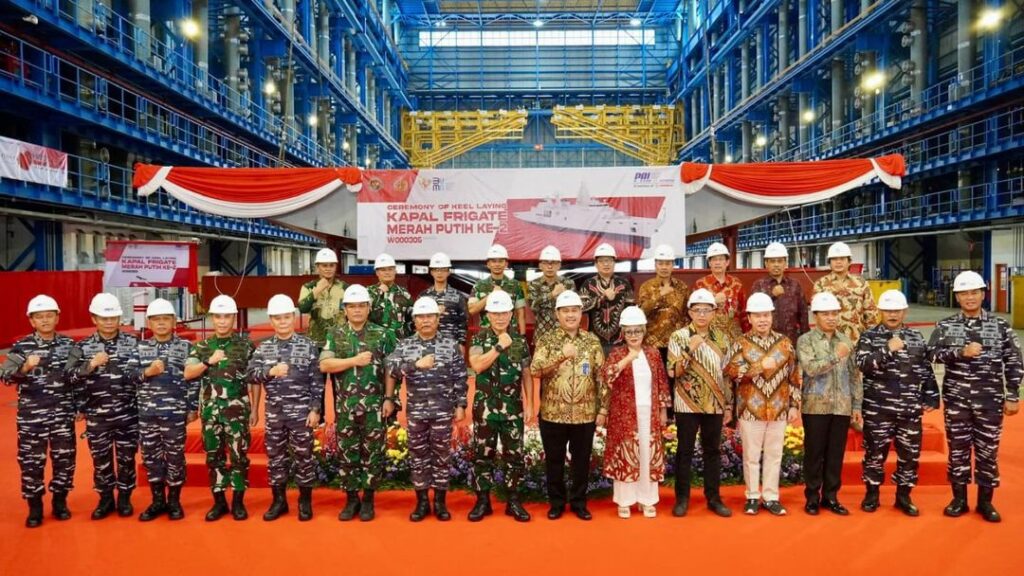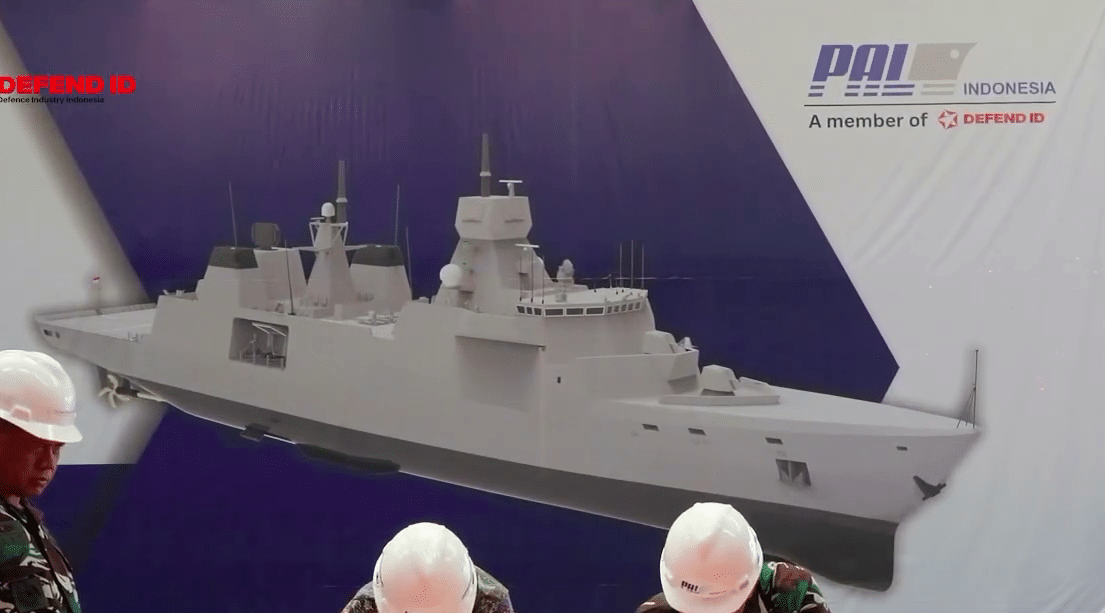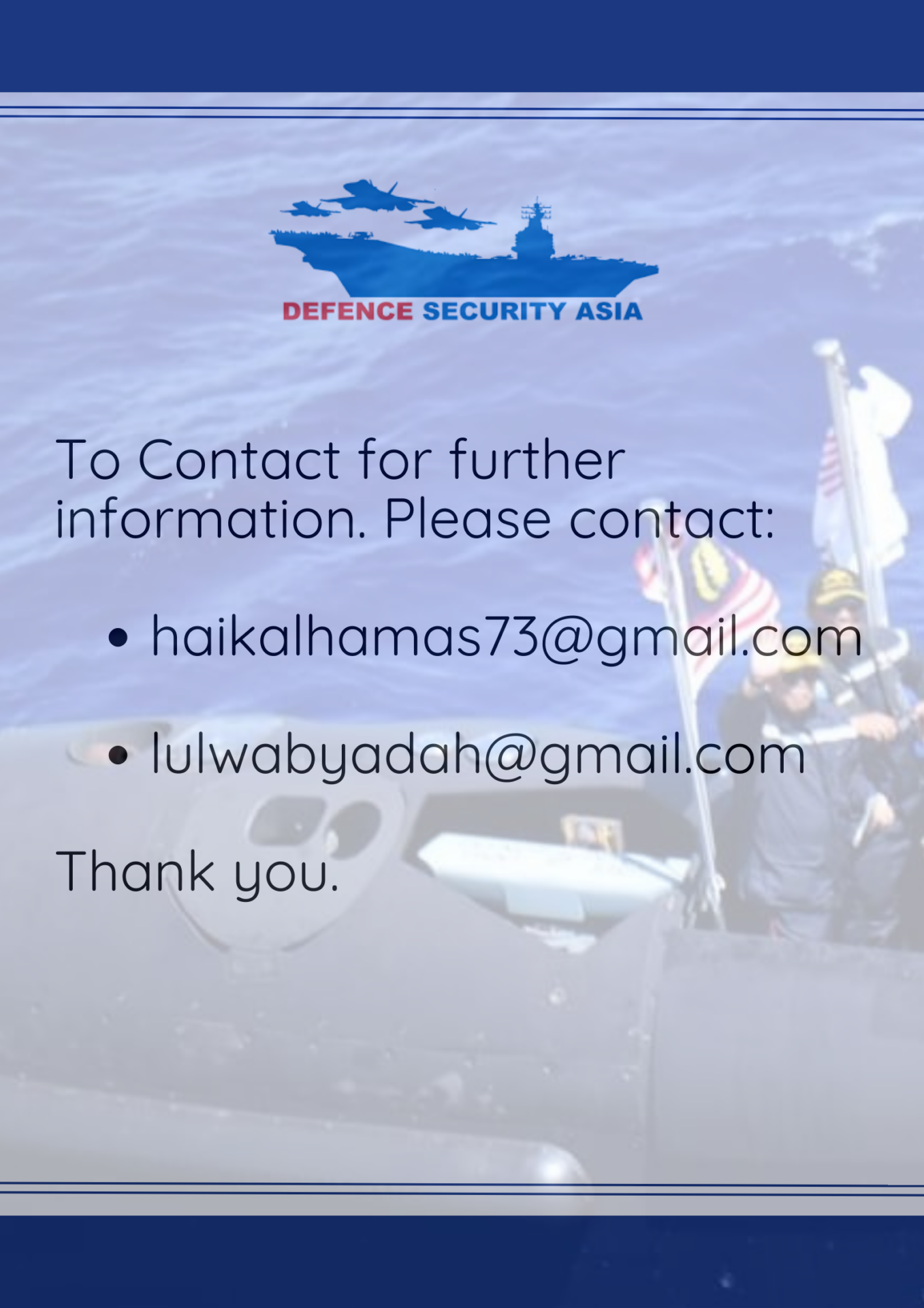Indonesia Begins Construction of Its Second 5,700-Ton “Merah Putih” Frigate
The acquisition and construction of the two "Merah Putih" frigates are part of Indonesia's ongoing efforts to modernize its navy and bolster its defense industry capabilities. These initiatives aim to enable the Southeast Asian nation to produce larger and more technologically advanced warships.
(DEFENCE SECURITY ASIA) – Indonesia has officially commenced the construction of its second “Merah Putih” frigate with a keel-laying ceremony at PT PAL Indonesia’s facilities in Surabaya, several days ago.
The keel-laying ceremony for the second “Merah Putih” frigate was held ahead of schedule, originally planned for March 2025. It follows the steel-cutting ceremony for the frigate, which took place in June this year.
The acquisition and construction of the two “Merah Putih” frigates are part of Indonesia’s ongoing efforts to modernize its navy and bolster its defense industry capabilities.
These initiatives aim to enable the Southeast Asian nation to produce larger and more technologically advanced warships.
Both “Merah Putih” frigates, designed for the Indonesian Navy (Tentara Nasional Indonesia-Angkatan Laut, TNI-AL), are based on the Arrowhead 140 design developed by Babcock.
Indonesia held the keel-laying ceremony for its first “Merah Putih” frigate in August last year, following the steel-cutting ceremony in December 2022.

Both ceremonies for the first and second frigates were conducted at PT PAL Indonesia’s facilities in Surabaya.
PT PAL Indonesia signed a contract for the acquisition of the two “Merah Putih” frigates on April 30, 2020.
The ships are based on the Arrowhead 140 (AH 140) design, with Babcock agreeing to transfer the design to PT PAL under a collaborative agreement.
The frigate’s design was subsequently modified to meet Indonesia’s specific requirements.
The “Merah Putih” frigates are expected to be delivered to the Indonesian Navy by 2026.
Indonesia is the first export customer for the AH 140 frigate, a design that also serves as the basis for the British Royal Navy’s Type 31 frigate program.

Measuring 138.7 meters in length and displacing 5,700 tons, the AH 140 frigate can accommodate up to 160 crew members but is capable of operating with a minimum of 100 personnel.
It is also equipped to carry a medium-sized helicopter.
Weighing in at 5,700 tons, the “Merah Putih” frigate is the largest and heaviest frigate in Southeast Asia.
The AH 140 frigates boast a top speed of 28 knots and a cruising range of 9,000 nautical miles at 18 knots.
In terms of armament, the “Merah Putih” frigates will feature 24 Vertical Launch Systems (VLS) for medium-range surface-to-air missiles (SAM), 32 VLS for long-range SAMs, 16 VLS for long-range surface-to-surface missiles, two 76mm cannons, and one Millennium Gun Close-In Weapon System (CIWS). — DSA



Comments are closed.